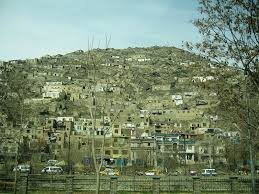A New Chapter for Urban Inclusion
In a major push to transform the urban landscape and improve living conditions for millions, the Delhi government is set to implement sweeping policy changes to fast-track slum redevelopment across the capital. The initiative is poised to impact more than 3 million residents spread across 675 slum clusters, many of which have remained untouched by previous rehabilitation schemes.
The city is preparing for one of its most ambitious housing and urban inclusion efforts in recent years.
No More Red Tape: Unlocking Delhi’s Zoning Barriers
A central change in the upcoming policy is the removal of stringent zoning restrictions. For the first time, land in non-residential zones will be allowed for slum redevelopment, paving the way for housing solutions that were earlier stalled due to planning regulations.
However, protected areas such as forest land, ridge zones, and heritage sites will remain off-limits. Officials clarified that the move is aimed at eliminating artificial roadblocks, not compromising ecological or cultural heritage.
Partnering with Private Players: The Self-Financing Model
The new framework will be developer-driven, allowing private builders to take up redevelopment in exchange for development rights and profit margins through surplus units.
Under this model:
- Existing slum dwellers will receive free EWS (Economically Weaker Section) housing.
- Builders can utilize a portion of the land for commercial or residential development to finance the project.
This public-private partnership (PPP) approach aims to eliminate dependency on public funds and expedite construction timelines.
Cutting Through Bureaucracy: Single-Window Fast Track
The Delhi Development Authority (DDA) will introduce a single-window clearance system, reducing the current multilayered approval process.
Key procedural relaxations include:
- Elimination of the 4-hectare minimum land requirement for project eligibility.
- Reduction of resident consent requirement to 75%, making it easier to initiate projects.
These steps are designed to encourage developers to enter areas previously deemed too small or contested for viable intervention.
First Targets: High-Density Clusters Under Review
While the final policy is expected to be notified after a round of public consultation, early reports suggest that high-density clusters with high development potential will be prioritized.
A senior government official noted that the draft is in its final stages and will be placed before the Cabinet within weeks. Specific zones within East, North, and West Delhi are expected to see pilot projects roll out soon after clearance.
Beyond Infrastructure: A Vision for Dignity and Livelihood
More than just concrete homes, the policy envisions creating livable, integrated communities. This includes:
- Basic civic infrastructure: sewage, water, electricity
- Access to health and education facilities
- Connectivity to employment hubs
The reform signals a paradigm shift from shelter-centric models to a holistic vision of urban equity and inclusion.
Building Futures, Not Just Buildings
Delhi’s slum redevelopment overhaul isn’t just about infrastructure—it’s about dignity, opportunity, and bridging centuries of spatial inequality. With the right checks, transparent execution, and community involvement, the capital may be on the brink of rewriting its urban story—one rehabilitated colony at a time.
Frequently Asked Questions (FAQs)
Q1: What is the main aim of Delhi’s new slum redevelopment policy?
The primary objective is to accelerate the transformation of slum areas into dignified housing clusters by simplifying regulatory approvals and attracting private sector investment. The government aims to ensure faster, more efficient in-situ redevelopment for Delhi’s urban poor.
Q2: Which department is overseeing the redevelopment policy?
The Delhi Urban Shelter Improvement Board (DUSIB) is the nodal agency, working closely with the Delhi Development Authority (DDA), Municipal Corporation of Delhi (MCD), and the Revenue Department for cross-agency coordination.
Q3: How is the government incentivizing private developers?
The policy proposes a higher Floor Area Ratio (FAR), simplified clearance procedures, and faster land aggregation to make slum redevelopment commercially viable for private players.
Q4: Will current slum residents be displaced?
The focus remains on in-situ rehabilitation, meaning that slum dwellers will be accommodated within the same area through vertical housing models. Temporary relocation may occur during construction, but right to return is guaranteed.
Q5: How many households are expected to benefit initially?
Approximately 10,000 households across 14 locations have been identified for the pilot phase, according to government sources.
Q6: What are the major challenges in slum redevelopment in Delhi?
Key hurdles include land ownership disputes, lack of developer interest, legal clearance delays, and community resistance due to past failed rehabilitation efforts.
Q7: When is the policy expected to be finalized?
The government is currently in the final stages of policy drafting, with implementation expected to begin after cabinet approval, likely in the coming months.
Q8: Will residents receive ownership rights under this scheme?
Yes. Once rehabilitation is complete, eligible slum dwellers are expected to receive formal property titles, strengthening tenure security and enabling access to services and loans.

